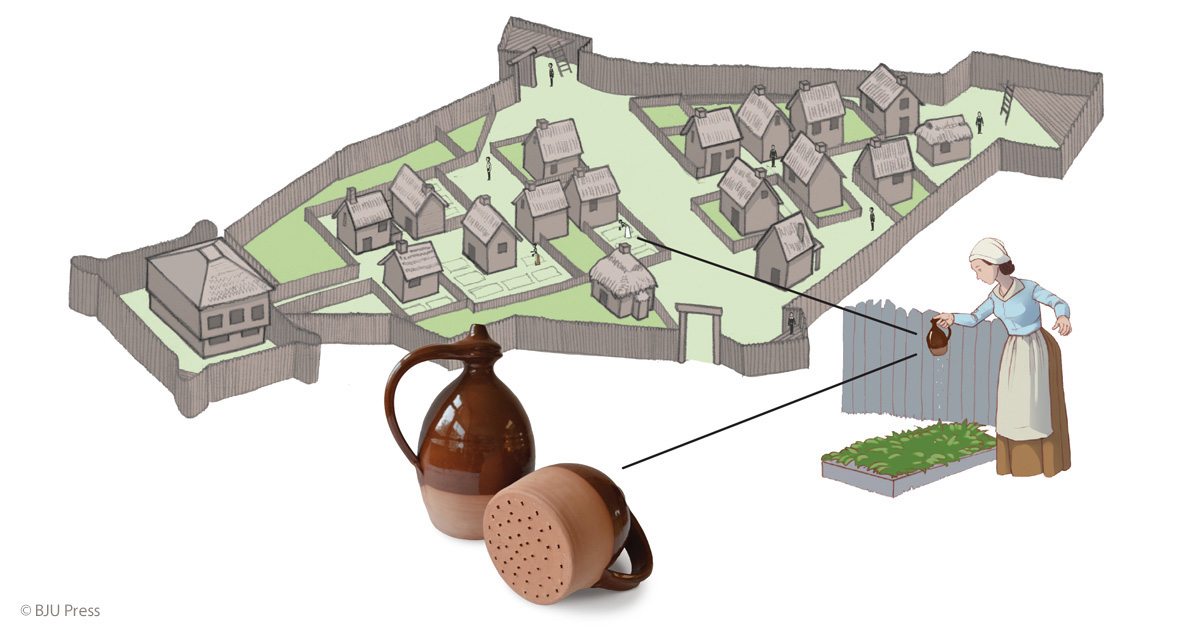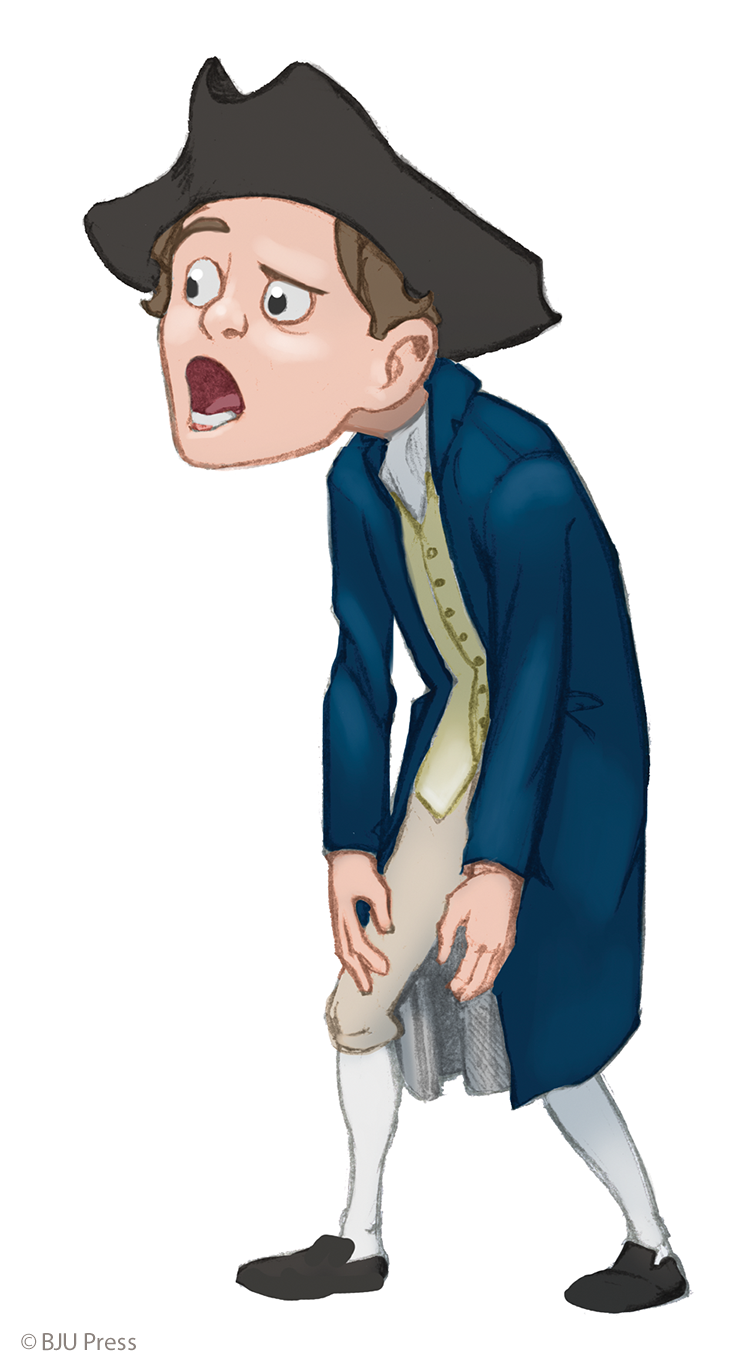Right outside the BJU Press art department, the room is lit with the glow of florescent light bulbs. But when I cross the threshold into the artists’ workroom, I find myself in a room without much artificial lighting. Instead, large windows allow natural sunlight to illuminate illustrators, ceramic artists, fiber artists, and their work. In the far corner of the room, close to the window is Zach’s desk. His workspace is dotted with illustrations he has done.
Zach is one of the illustrators working on a new edition of Heritage Studies 5, a fifth-grade history textbook from BJU Press. His artwork does more than add to the beauty of the book, it enhances your child’s education.

Artifacts in Their Historical Place
Zach pulls up several of his illustrations on the computer to show me. One textbook page shows a woman from Plymouth holding a water jug over an herb garden. On the left there is a photograph of the illustrated artifact.
“The depiction of the watering jug is direct and depicts the simplicity and genius of the jug in a way that text alone could never do.” Zach explains. The illustration transports us back in time to see what life was like at Plymouth. A photograph alone could show only small pieces of life. Illustrations give us opportunities to expand our understanding.
 Emotional Connection to History
Emotional Connection to History
Elsewhere on our blog, Zach has explained the emotional impact of illustrations. It’s an impact that text alone is incapable of portraying. So when Heritage Studies 5 takes up the subject of the American colonists’ emotional state leading up to the Revolutionary War, text needs the support of pictures. Zach created a series of nine three-inch-tall colonists reacting to the acts of the English government. As the text describes successive grievances that lead to the revolution, the colonist moves from shock, to disbelief, to anger until he shouts: “This means war!”
“Illustrations free the student to perceive information as not only factual, but also emotional.” Zach says. “They work hand-in-hand with maps, photos, and text to create a collaborative experience where artistic disciplines are woven together to form an immersive tapestry of history.”
History books should be accurate in the information they convey. History textbooks should also engage children so that they understand an event, remember it, and make use of it. As illustrations work in conjunction with text, maps, photographs, and informational graphs they empower children with a desire to better understand the event. All the art and information develop interest and insight into the setting, circumstances, and surrounding emotions of what they’re studying.
Returning to the tapestry metaphor, Zach argues: “A tapestry is worth more than the cost of spools thread: just as the act of weaving thread creates value, the act of weaving artistic disciplines [together] creates value for the child.”
To see more of Zach’s work in Heritage Studies 4, click on “Look Inside the Book.”